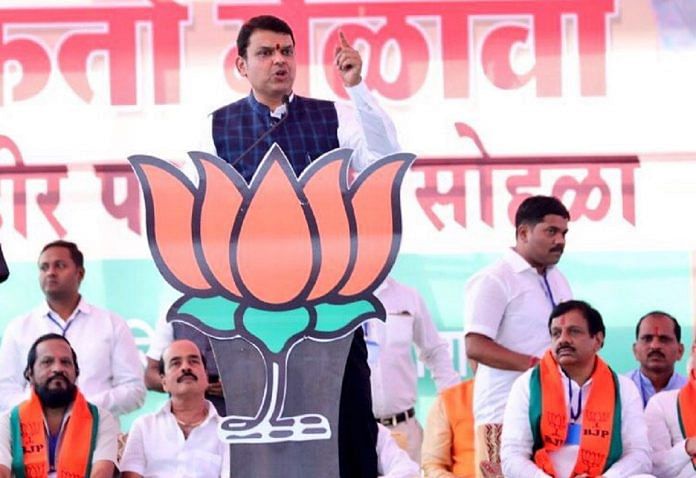Mumbai: After battling a wave of protests by the Marathas, from silent marches to violent demonstrations, the Devendra Fadnavis government has finally found favour among Maharashtra’s most dominant community — just months before of the state assembly polls.
The Bombay High Court Thursday upheld the state government’s Maratha quota legislation. It has, however, tempered down the quantum of reservation to 12 per cent in education and 13 per cent in government jobs from the proposed 16 per cent.
The ruling comes as a feather in the cap for the BJP-Shiv Sena government, earning it bragging rights over the opposition. The government’s legislation was able to withstand court scrutiny, unlike the erstwhile Congress-Nationalist Congress Party (NCP) administration, which too had issued an ordinance to provide 16 per cent Maratha quota in education and jobs, but which had been stayed by the Bombay High Court for breaching the Supreme Court-mandated 50 per cent limit on reservations.
Pratap Asbe, a political analyst, said: “The BJP-led government will get an upper hand now. The opposition will not be able to counter with anything about Maratha anger.”
Walking a tightrope between Marathas and OBCs
The Marathas, who comprise about 32 per cent of the state’s population, have been demanding reservation for several years. The community had organised 58 silent, non-political protests for two years, starting in 2016. The demonstrations took a violent turn in late 2018, briefly also taking the form of an anti-Fadnavis stir.
The OBC community, which accounts for 52 per cent of Maharashtra’s population, had earlier expressed concern that a Maratha quota might cut into reservations which are in place for other sections of the society.
“The major challenge before this government was striking a balance between the OBCs and Marathas without upsetting either,” Asbe said.
The state government has created a new category — Socially and Economically Backward Class (SEBC) — to implement the Maratha quota, so as to extend the 50 per cent ceiling that is mandated by the apex court. This way, it is able to give reservation to the Marathas without cutting into existing quotas for OBCs, Scheduled Castes and Scheduled Tribes. The Bombay High Court, in its ruling, has upheld the same.
Political analyst Hemant Desai said: “This government has definitely managed to walk the tightrope of keeping both the OBCs and Marathas happy. The OBCs have been a support base of the BJP since the 1990s. The Marathas and Dalits were largely rallying behind the Congress-NCP earlier.
“The BJP has consciously cultivated some Dalit support over the past few years, and now, with this reservation, they will have a strong Maratha following too.”
There was anyway “no visible anti-incumbency in Maharashtra”, Desai further said, adding that the high court’s decision will only make the opposition “weaker”.
He said the high court’s decision is also likely to soothe agrarian discontent, since the demand for a Maratha quota was fuelled by distressed Marathwada farmers wanting access to jobs and education.
Also read: Devendra Fadnavis has a problem — how to appease Marathas & not anger OBCs
‘No animosity towards government now’
After a year of protests, in June 2017, the Maharashtra government had asked the State Backward Class Commission to study the social and economic backwardness of Marathas.
The commission was asked to determine parameters in order to establish the community’s backwardness — study existing reports on the issue, study the population of Marathas in the state and their presence in government jobs and education, and determine exceptional circumstances to make the Marathas eligible for reservation.
When the protests turned violent, the state government fast-tracked its report and passed the Maratha quota bill with the support of all parties in November 2018.
“This has been a fight for over 40 years. It involved three years of protests and 58 silent morchas, with cases against 10,000 Maratha youth. Today, we feel satisfied. The 12-13 per cent is a slight compromise because we had demanded 16 per cent reservation,” said Virendra Pawar, one of the leaders of the Maratha Kranti Morcha, which was spearheading the protests.
“We had targeted the previous government too over this demand. But we are happy that the present government commissioned a study to prove the social and economic backwardness of our community. Both houses unanimously passed the Maratha quota bill. Now we do not have feelings of animosity towards this government.”
Also read: In Maratha reservations battle, the struggles of a community to define its caste status



